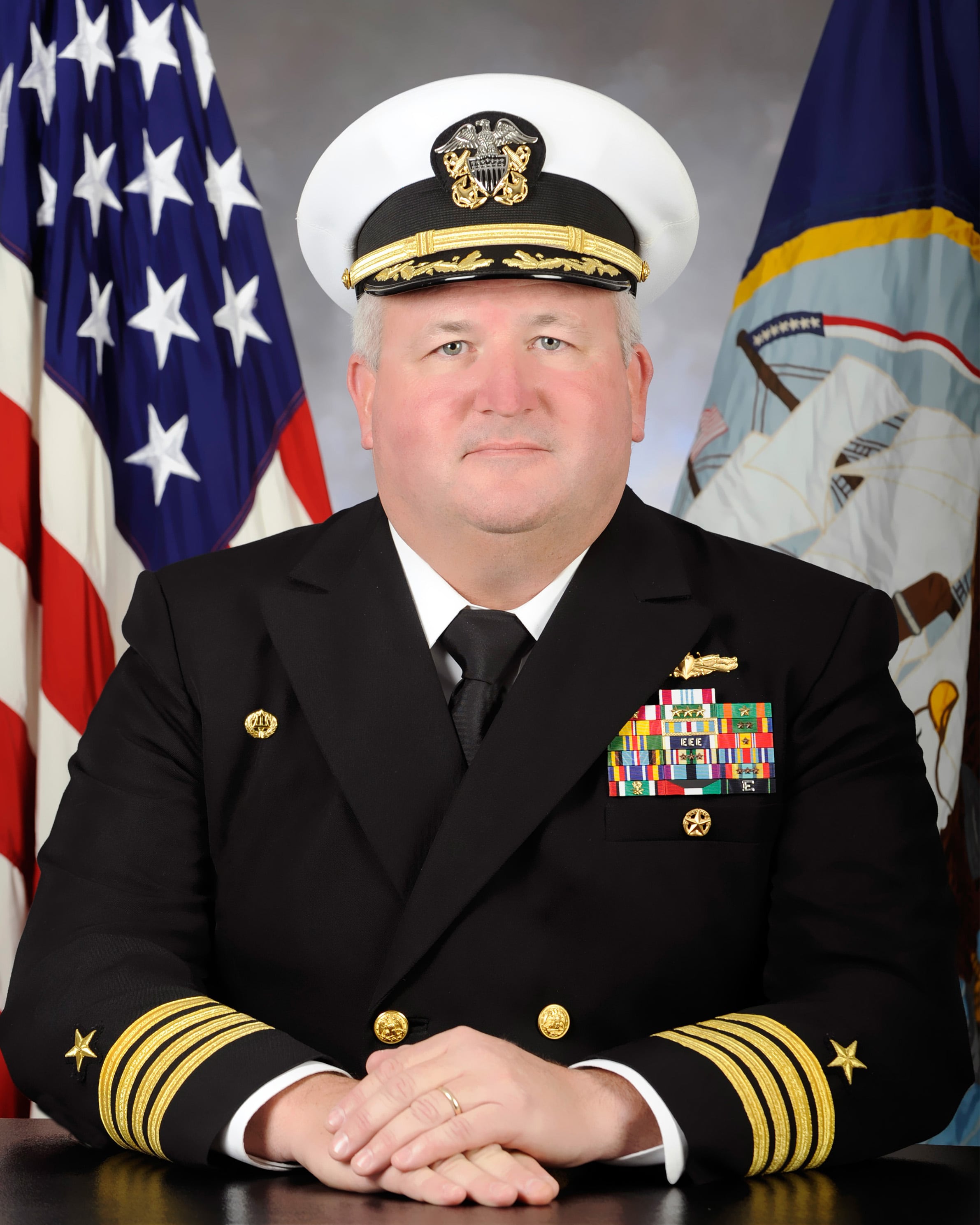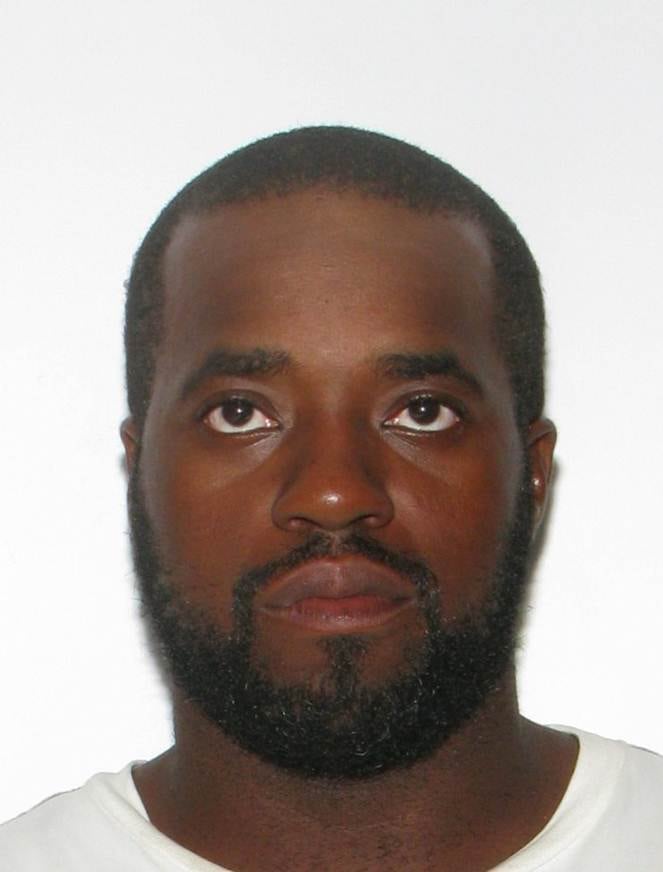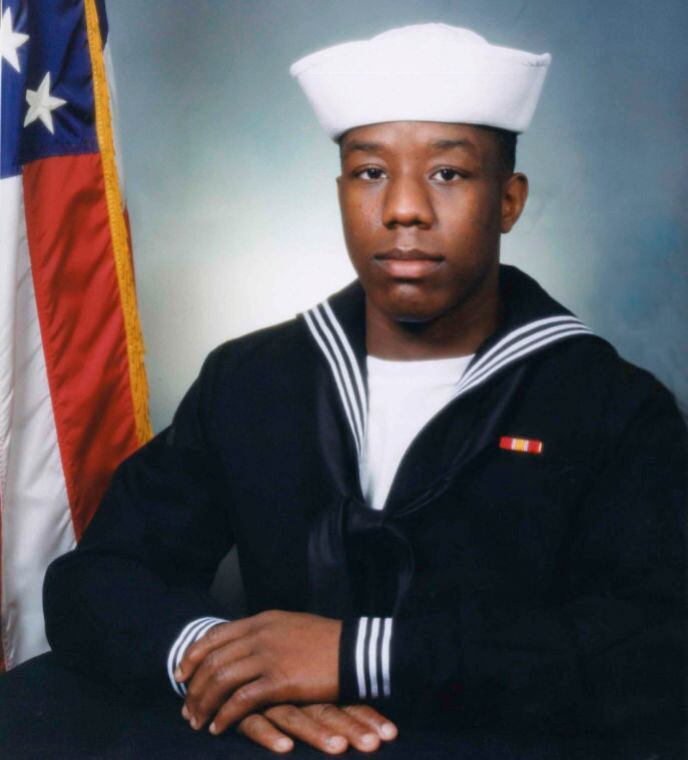Six people — to include the commanding officer of Naval Station Norfolk — have had or will receive punishment for their role in an unauthorized breach that ended with the March 24, 2014, shooting death of Master at Arms 2nd Class Mark Mayo.
The punishments were handed out by Rear Adm. Rick Williamson, commander of Navy Region Mid-Atlantic. They include:
- style="margin: 0in 0in 0.0001pt 0.5in;">Capt. Robert Clark, commander of Naval Station Norfolk, received unspecified but "appropriate administrative measures," Williamson told Navy Times in an April 7 phone interview. The admiral would not go into details, citing privacy rights. Clark will remain in command of the installation.
- style="margin: 0in 0in 0.0001pt 0.5in;">The Naval Station Norfolk security officer, an unnamed lieutenant with no facility experience prior to this assignment, received administrative action and was relieved of duties. He has been temporarily assigned to Navy Region Mid-Atlantic. He was replaced by Cmdr. Craig Trent, Navy Region Mid-Atlantic's security director and a man with 28 years of experience. A new security officer is scheduled to report in the fall.
- style="margin: 0in 0in 0.0001pt 0.5in;">An unnamed master at arms second class, who has since transferred to an overseas assignment, will return to face disciplinary or administrative action. He was conducting Rrandom Aanti-Tterrorism Mmeasures at the vehicle gate through which the assailant entered and did not sound the alarm when the unauthorized access took place.
- style="margin: 0in 0in 0.0001pt 0.5in;">Investigators laid much of the blame on five Defense Department civilian gate guards. Two have since voluntarily retired; Williamson hit the remaining three with a Notice of Proposed Discipline in the first week of April. Potential punishments range from suspension to loss of employment. By law, they have up to 30 days to prepare their defense.
"As soon as the [Manual of the Judge Advocate General] was completed, it allowed me the opportunity to conduct a thorough analysis and decide accountability actions," said Williamson, who is responsible for Navy installations from North Carolina to Maine. "I own that decision … and I take that job very seriously." The investigation was conducted by Rear Adm. Jeffrey Harley, assistant deputy chief of naval operations for operations, plans and strategy, and endorsed by Adm. Michelle Howard, vice chief of naval operations. It was provided to Navy Times on March 17.

Capt. Robert E. Clark will continue to serve as commander of Naval Station Nofolk, Va., because he had been onboard only a short time when the incident occurred.
Photo Credit: Navy
Williamson said he is satisfied with the punishments levied and defended the year it took to make it happen. The investigation and subsequent review "needed to be deliberate, it needed to be thoughtful," he said. "We need to be committed to learning and not repeating the things that were in the investigation. We need to make sure we get it right."
One of the three civilians facing discipline was the unnamed police officer-in-charge at Gate 5 that night. He was immediately "red-tagged," which means he was removed from law enforcement duties and is not authorized to carry a weapon. He is not working in any law enforcement capacity. Investigators said he and his fellow civilian police officers at Gate 5 "were clearly negligent in the performance of their duties, and there is a gross lack of procedural compliance, accountability and oversight of the civilian police force."
The police officer-in-charge allowed Jeffrey Tyrone Savage, 35, to drive his employer's semi-tractor cab through Gate 5 at approximately 11 p.m. that evening. Savage was stopped but not asked to show proper identification. Believing Savage wanted to make a U-turn and exit the base, the civilian police officer-in-charge allowed him to pass.

Jeffrey Tyrone Savage, 35, who wrested a gun from one sailor and killed another who intervened, was gunned down during the incident.
Photo Credit: AP
Approximately nine minutes after the initial encounter, the officer-in-charge departed in his police car to search for the suspect. Neither he nor the other gate guards radioed to report the unauthorized access. He later located Savage's truck idling in a parking lot adjacent to Pier 1. He looked in the truck, did not see the driver, and contrary to procedures did not notify Naval Station Security Dispatch of the abandoned idling truck. He instead headed back to Gate 5.
As this happened, Savage was attempting to board the destroyer Mahan. The petty officer of the watch drew her weapon, but had it wrestled away. Mayo, who was on the pier and had been notified of the unauthorized access by the entry control point sentry, arrived on the quarterdeck at this time. Savage was poised to shoot the petty officer of the watch when Mayo engaged, effectively placing himself between the two. Mayo was shot once in the front, then spun to cover the sailor and was shot three times in the back. He was not wearing his ballistic vest, which was in the van. Mayo's partner and the Mahan's roving patrol immediately returned fire. Both Mayo and Savage died on scene. Mayo was posthumously awarded the Navy and Marine Corps Medal, the highest non-combat heroism award.
"Petty Officer Mayo was absolutely a hero that night," Williamson said. "His actions that night exemplify what it means to be a shipmate. He gave his life to protect that ship and the sailors.

Master at Arms 2nd Class Mark A. Mayo was posthumously awarded the Navy and Marine Corps Medal, the highest non-combat heroism award.
Photo Credit: Navy via AP
I know it has been very hard on his family. Very difficult. My heart and prayer goes out to them."
The admiral said he would keep Clark on as the station skipper because he was onboard for "a very short period of time, and I don't think that was enough time to effect change even though he had started some [changes]."
For example, Clark personally intervened when the security department's unnamed precinct commander — the second-highest ranking civilian security officer — did not come to work for six months in 2013, and missed 172.5 hours in first three months of 2014, due to what investigators called an "alleged" medical leave. The encounter took place prior to the shooting. The precinct commander returned to work, but took an unexpected early retirement two weeks after the shooting. His absence contributed to the lack of supervision and laxity of standards, according to investigators.
Williamson commended Clark for taking lead in the implementation of corrective actions recommended by investigators. Communication between emergency personnel and docked ships was chief among these. Every vessel is now given a radio programmed to installation frequencies. The Navy also increased the number of required watch standers at all pier entry control points and began rotating active-duty night and daytime watch standers to ensure all receive the same level of oversight and training.




